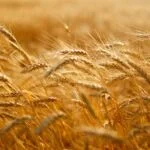Triticale, a hybrid of wheat and rye, has gained popularity in recent years for its robustness and versatility. This grain crop brings together the best of both worlds – the yield potential and grain quality of wheat with the disease and environmental tolerance of rye. But how can you maximize the yield and quality of triticale? This article will guide you through the best practices for planting triticale.
Understanding Triticale
Triticale combines the beneficial traits of its parent crops. From wheat, it inherits high yield potential and good grain quality. From rye, it gets disease resistance and the ability to thrive in less-than-ideal environmental conditions. These characteristics make triticale a valuable crop in various agricultural systems, particularly in regions with challenging growing conditions.
Seeding Triticale
The seeding process for triticale is similar to that of other cereal crops. However, given its larger seed size, triticale generally requires a higher seeding rate. The exact rate can vary based on factors such as seed size, germination rate, and seeding conditions, but a typical range is 100–120 pounds per acre.
Fertilizing Triticale
Like other cereal crops, triticale responds well to nitrogen fertilization. A split application, with one-third of the nitrogen applied in the fall and two-thirds in the spring, can optimize nitrogen use efficiency and boost yield potential. However, it’s essential to base fertilization practices on soil test results to avoid over- or under-fertilization.
Managing Pests and Diseases
Triticale’s rye heritage gives it a natural resistance to many common cereal crop diseases. However, it’s not immune to all pests and diseases. Regular field scouting and the use of integrated pest management strategies can help keep potential issues in check.
Harvesting Triticale
Triticale can be harvested for grain or used as forage. If you’re growing triticale for grain, you can harvest it using the same equipment and techniques as for wheat. If you’re using triticale as forage, the timing of the harvest can significantly impact the nutritional quality of the forage.
Conclusion
Triticale is a versatile and robust crop that can be a valuable addition to many farming systems. By understanding the unique characteristics of triticale and implementing the appropriate management practices, you can maximize both the yield and quality of this crop.
Want to learn more? Contact our team for all your triticale seed in Alberta trusts our guidance and supply. Get in touch today!










